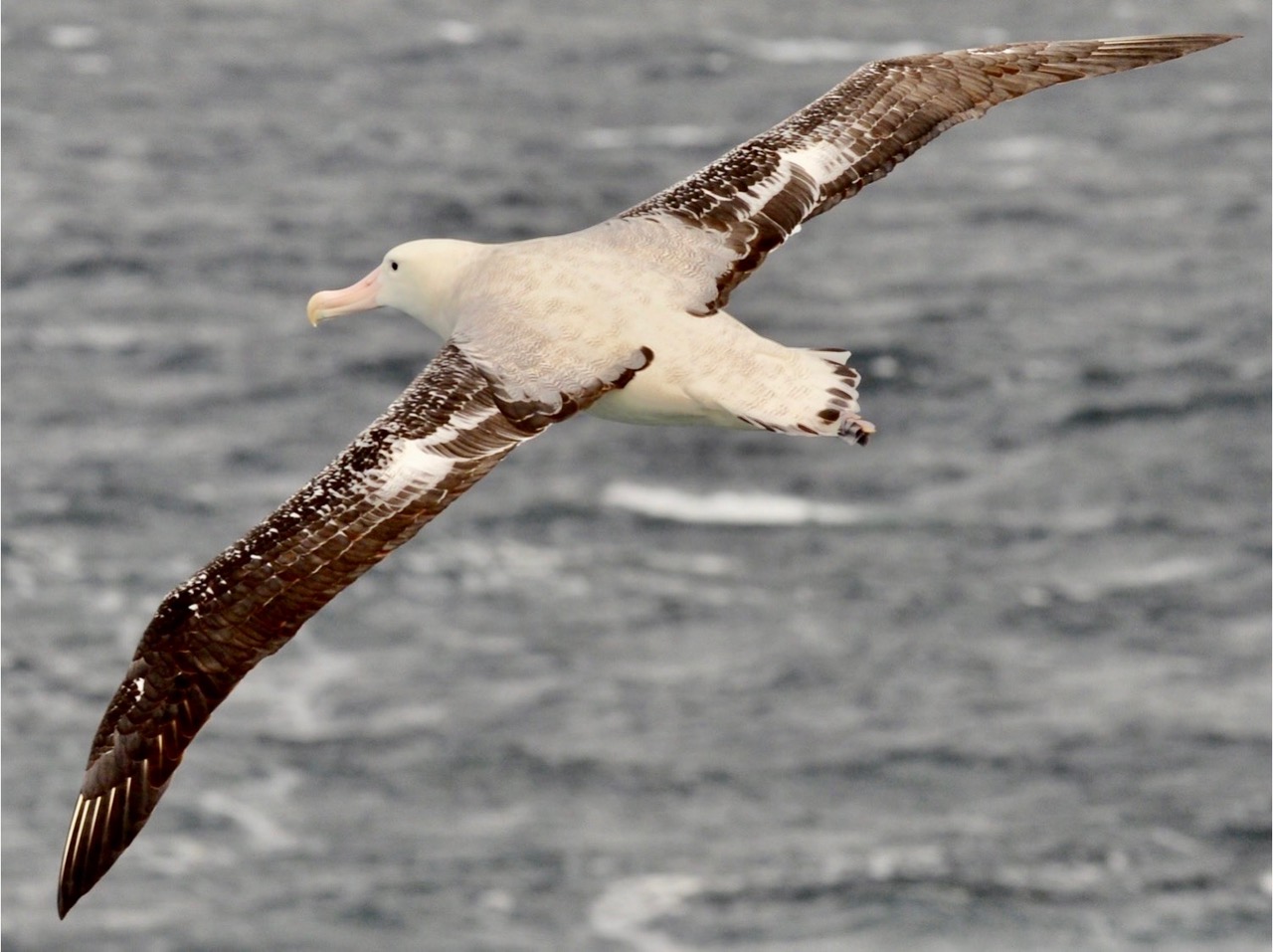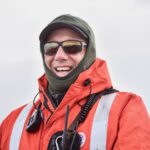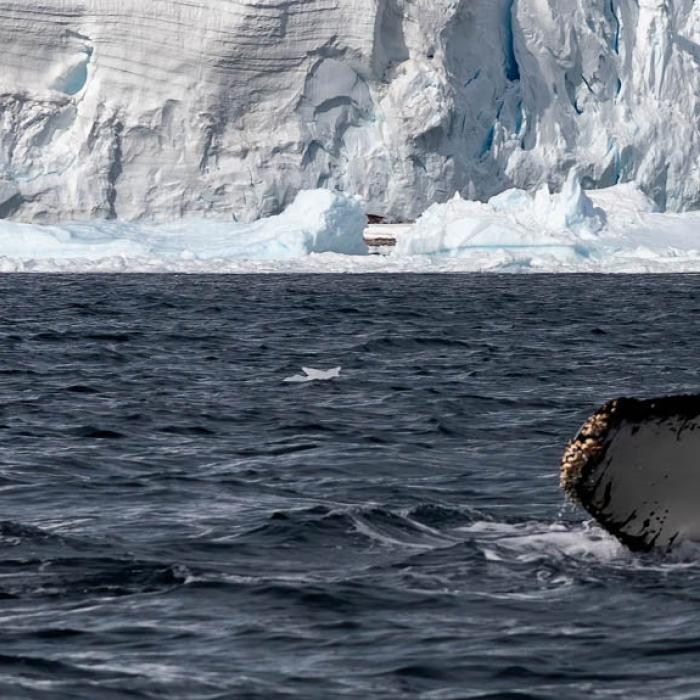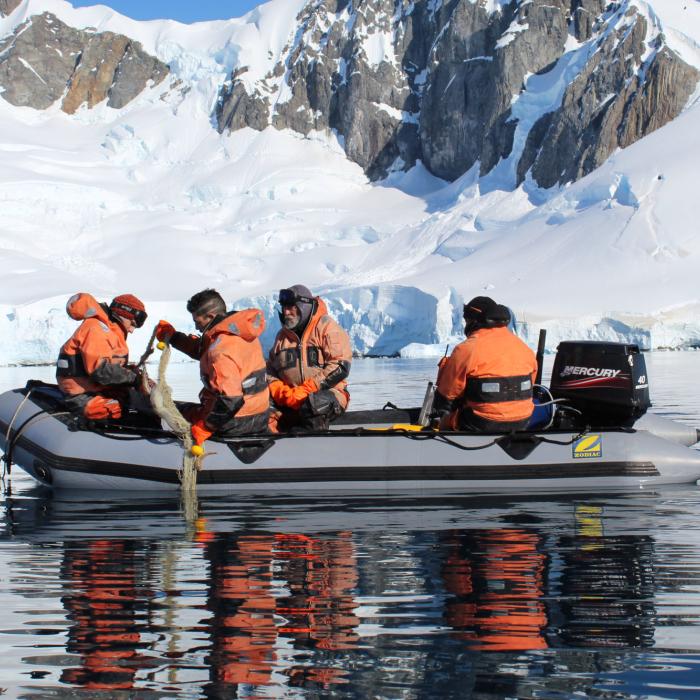
World Albatross Day: Conserving Albatrosses and the Oceans They Roam
In 2020, The Agreement for the Conservation of Albatrosses and Petrels (ACAP) designated June 19 as World Albatross Day to raise awareness annually of the conservation crisis faced by these vulnerable seabirds. This year’s focus is Marine Protected Areas – Safeguarding our Oceans. Here, Marco Favero, scientist, expedition leader, and former Executive Secretary of ACAP sheds light on why albatrosses are in danger and shares the importance of marine protected areas in conserving them and the oceans they roam.
Albatrosses are iconic birds -- emblematic species for ocean conservation. They play a crucial role in marine ecosystems by serving as indicators of ocean health. Albatrosses reflect the state of their environments and can reveal both natural and human-induced environmental changes that could be difficult to track in algae, krill, or other organisms on lower levels of the food web. Sadly, several species are threatened with extinction and their fate is closely linked to our ability to minimize impacts on breeding sites and sustainably manage the seas. World Albatross Day was established by the Agreement on the Conservation of Albatrosses and Petrels (ACAP) to raise awareness of these magnificent birds worldwide and highlight the conservation crisis they face.
Albatrosses are long-lived birds, with high adult survival rates, but they become sexually mature at a later age and have low fecundity, only raising one chick every one or two years. Given these extreme life-history characteristics, changes in adult mortality have a much greater impact on population trends than variation in other demographic parameters, such as breeding success, juvenile survival, or recruitment of new individuals into the breeding population.
 Black-browed albatross - Thalassarche melanophris. Credit: Marco Favero
Black-browed albatross - Thalassarche melanophris. Credit: Marco Favero
All albatrosses have wide at-sea distribution during both breeding and non-breeding seasons, overlapping with multiple fisheries in national and international waters. Often, this results in incidental mortality, or bycatch, of seabirds, especially albatrosses and petrels, that may be drowned by their attempts to grab bait from fishing hooks on longlines, get entangled in nets, or collide with fishing gear while trying to eat the by-products of trawl fishing operations. This is a major conservation concern for species so heavily impacted by changes in adult mortality.
Solving a conservation problem as pervasive as bycatch for species as wide-ranging as albatrosses and large petrels requires concerted management actions that cover both national and international waters. This, and other issues like invasive species at breeding sites, degradation or loss of nesting habitat, disease, pollution, and climate change, triggered the development of ACAP as a daughter agreement of the Convention on Migratory Species (Bonn Convention), and its ratification in 2004.
This year marks the 20th anniversary of ACAP coming into force. During these two decades, the Agreement’s 13 Parties (Argentina, Australia, Brazil, Chile, Ecuador, France, New Zealand, Norway, Peru, South Africa, Spain, United Kingdom and Uruguay), and Range States (States where albatrosses may be found but are not Parties to ACAP, including Canada, Mexico, Namibia, and United States) and other environmental organisations have jointly dedicated considerable efforts to improve the conservation status of ACAP's listed albatrosses (all 22 species), petrels (seven species) and shearwaters (two species). Recognising the importance of the conservation problems affecting albatrosses, ACAP established three working groups to advise on actions to mitigate seabird bycatch in fisheries, assist Parties in eradicating alien species from breeding sites, and developing guidelines on habitat restoration programmes, and biosecurity, among others.
 Wandering albatross - Diomedea exulans. Credit: Marco Favero
Wandering albatross - Diomedea exulans. Credit: Marco Favero
This year also marks the fifth World Albatross Day (WAD2024), established in 2020 to raise awareness of a conservation crisis these emblematic seabirds face, and what can be done to protect them. The theme for WAD2024 is Marine Protected Areas – Safeguarding our Oceans, highlighting the importance of marine protected areas in conserving both albatrosses and the oceans they roam.
Marine protected areas serve as sanctuaries for marine life, providing refuge from human-induced threats such as bycatch, overfishing, pollution, and habitat degradation, among others. They can be designated by governments within their own jurisdictional waters, as well as in areas beyond national jurisdictions. Celebrating WAD2024 offers the opportunity to shine a spotlight on these important conservation tools and their role in safeguarding albatrosses and the wider marine environment. By protecting the waters immediately around albatross breeding sites and key portions of their foraging and migratory ranges, we can reduce their incidental mortality, increase breeding success, and eventually improve population recovery.
Whilst albatrosses range worldwide, most species are distributed in the Southern Hemisphere and breed on remote oceanic islands. Only a small proportion of humanity is even aware of the existence of albatrosses, let alone their plight. Visiting albatrosses in their natural habitats, like in sub-Antarctic and Antarctic waters, offers an opportunity to appreciate these unique, but threatened species in an awe-inspiring wilderness that is also undergoing change.
The plight of the albatross is a call to action for the global community. Hopefully, concerted international actions made by Parties to ACAP and other States will allow albatross populations to recover to their original numbers and change their trajectory away from extinction. Let this World Albatross Day inspire our collective responsibility to protect these ocean sentinels and the vast, interconnected ecosystems they inhabit.
 About the author | Marco Favero - Convener of the ACAP Population and Conservation Status Working Group
About the author | Marco Favero - Convener of the ACAP Population and Conservation Status Working Group
Dr. Marco Favero is a Principal Investigator of the National Research Council in Argentina, serving as Convenor of the ACAP Population and Conservation Status Working Group (formerly Chair of the Advisory Committee and Executive Secretary of the Agreement). During the summer break Marco is an Expedition Leader for Abercrombie & Kent voyages in Antarctica. Along with researching ornithology and marine biology in South America and Antarctica, Marco is devoted to seabird conservation initiatives, with focus on fisheries management and related seabird bycatch issues.


